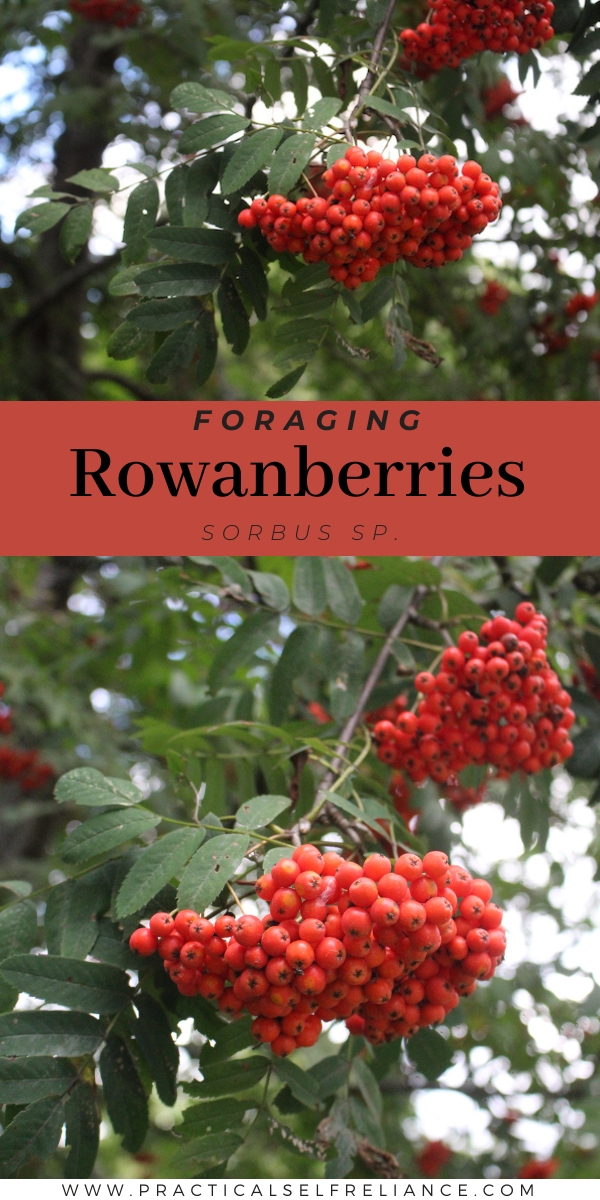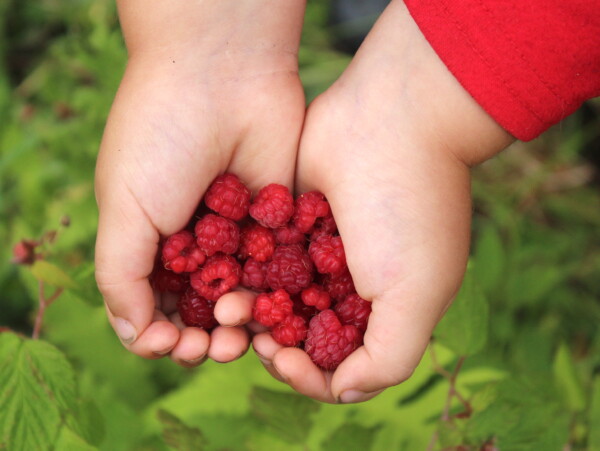Affiliate disclosure: This post may contain affiliate links. Please see our Privacy Policy.
Rowanberry Trees, also known as mountain ash trees, produce beautiful bright red clusters of rowanberries from wild woodland trees. European species have been used in cooking since the Middle Ages, and their distinctive fruit clusters make rowanberry trees easy to spot.

In early autumn, my son and I were hopping across rocks on a wet woodland trail. This is one of his favorite trails, and the wet shady environment is full of teaberry, partridgeberry, and his favorite, bunchberry.
His tiny pre-schooler hands are always on the lookout for those tiny clusters of low-growing fruit…and he’s rarely looking up to see what the trees can provide.
When he saw a scattering of red berries on the trail, he assumed someone must have dropped their haul, but when this mama pointed up, he was surprised to find a new fruit hanging overhead.
Bright red clusters of rowanberries are hard to miss, but if you do happen to be looking down at your footing, they do conveniently drop off the clusters one by one when ripe…scattering themselves on the ground and inviting you to look up and find the real prize.
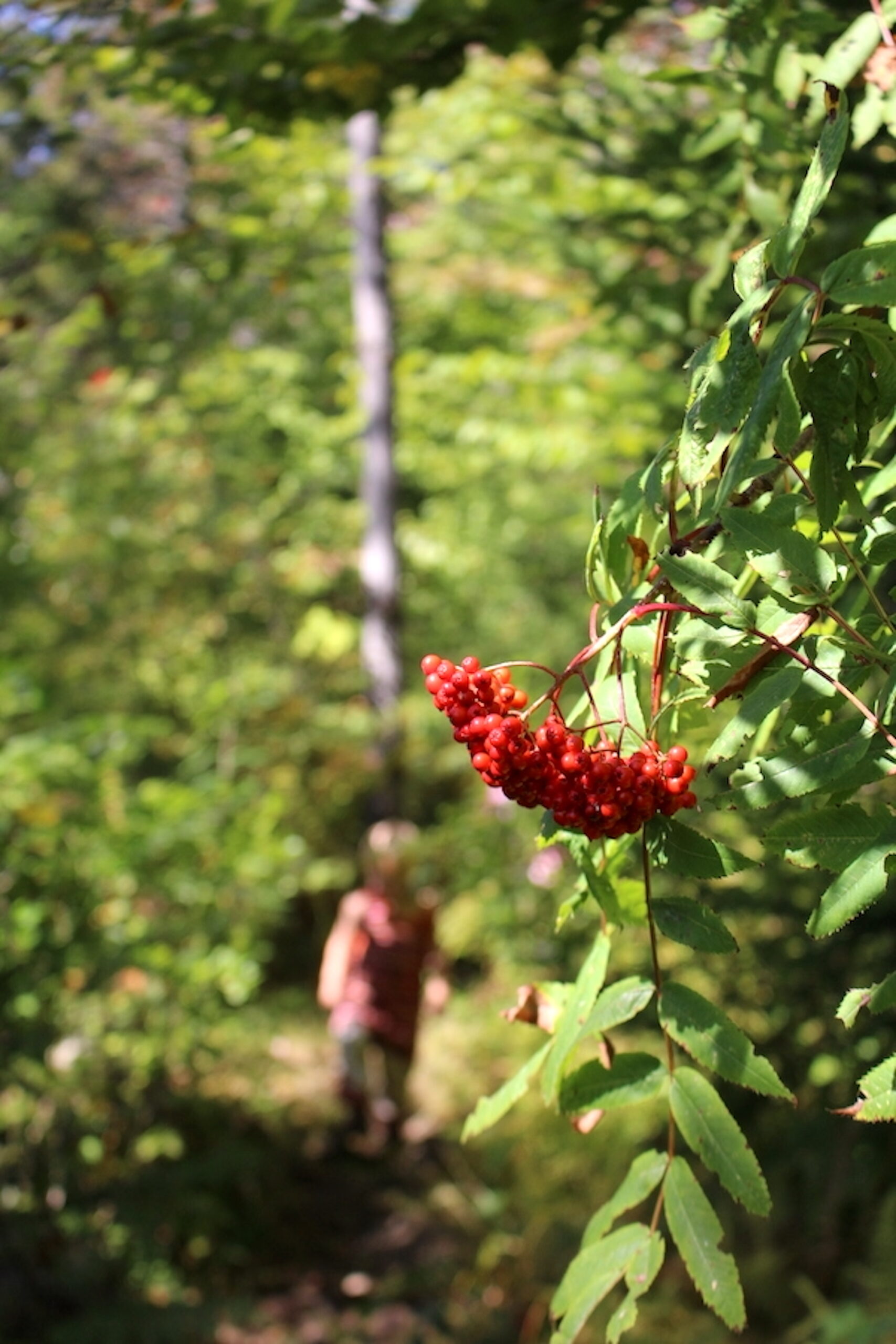
What is Rowanberry?
Rowanberry or Sorbus is a genus of over 100 small deciduous, perennial trees and shrubs in the Rosacea or Rose Family. You may hear members of this genus called Rowanberry, Mountain Ash, White Balm, White Beam, Quickbeam, Quicken Tree, Witch Wiggin Tree, Keirn, Cuirn, or Service Tree.
There are Rowanberry species native to Europe, North America, Lebanon, Asia, Siberia, and North Africa. Here in the United States, you may find our native Rowanberries, American Mountain Ash (Sorbus americana), Showy Mountain Ash (Sorbus decora), and Sitka Mountain Ash (Sorbus sitchensis) or species that have naturalized here, like European Mountain Ash (Sorbus aucuparia) which was brought over in colonial times as a cultivated tree.
There are also several domesticated cultivars of Rowanberry available. It’s a popular ornamental tree for parks and gardens.
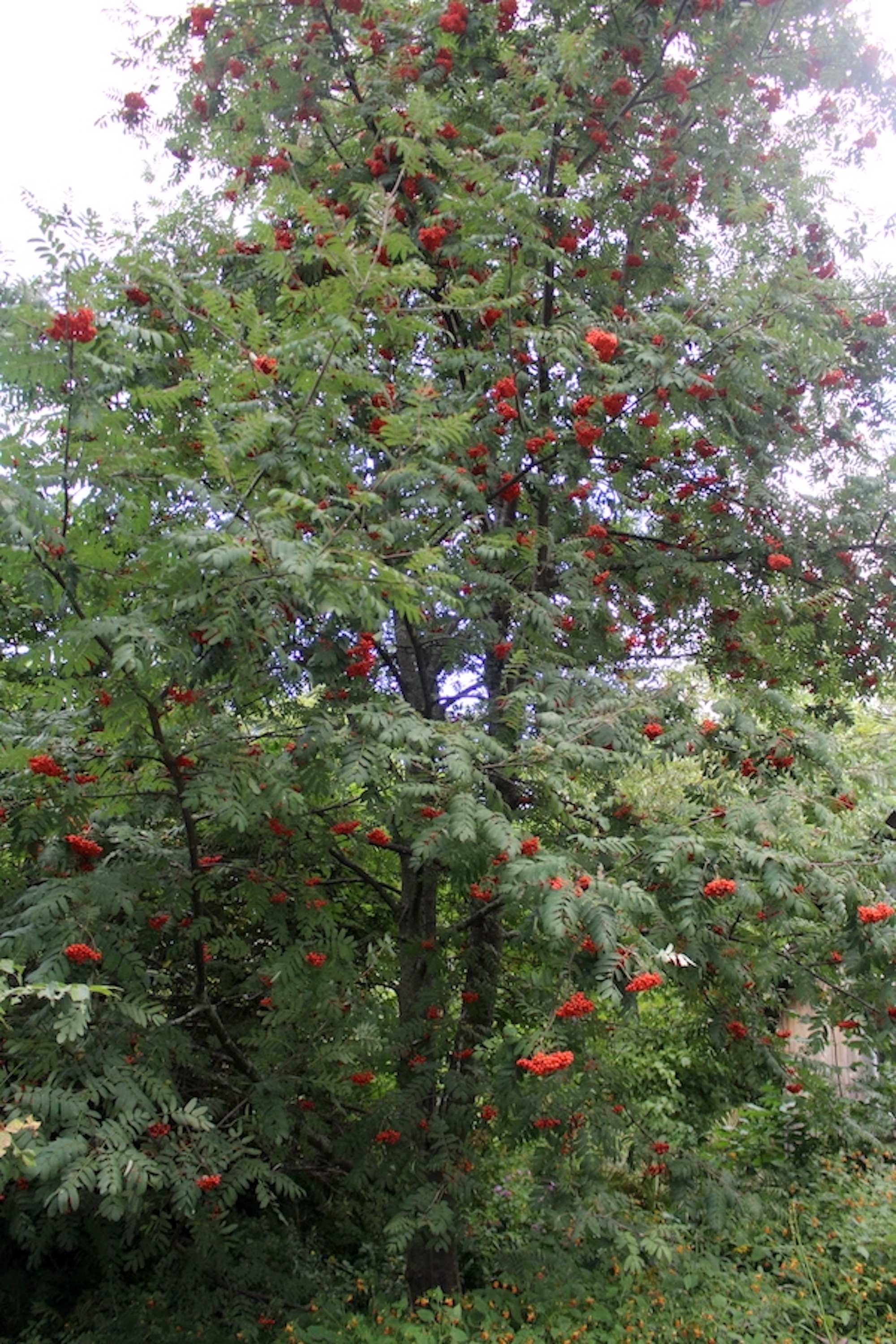
Is Rowanberry Edible?
Rowanberry leaves, twigs, buds, bark, sap, flowers, and berries are edible and are frequent ingredients in internal preparations of traditional medicine practices. The berries are frequently used for culinary and medicinal preparations, while the other parts of the plant are used mainly for herbal remedies, frequently as tea.
While they may look tempting, you shouldn’t eat raw Rowanberries. For one thing, they’re extremely tart and astringent. Additionally, the berries contain parasorbic acid, which can cause congestion, indigestion, and kidney damage. Thankfully, the parasorbic acid is converted to harmless sorbic acid upon cooking.
Some sources have also reported that Rowanberry seeds contain compounds that release small amounts of cyanide when you ingest them. For this reason, it’s probably best to strain out the seeds as you process the berries.
Some individuals find Rowanberry irritating to their stomach when consumed in excess. Especially if you’re new to Rowanberry, start with small amounts.
Little is known about Rowanberry’s effects on pregnant or breastfeeding individuals. Until further research is done, Rowanberry should be avoided at these times or until you consult with your physician.
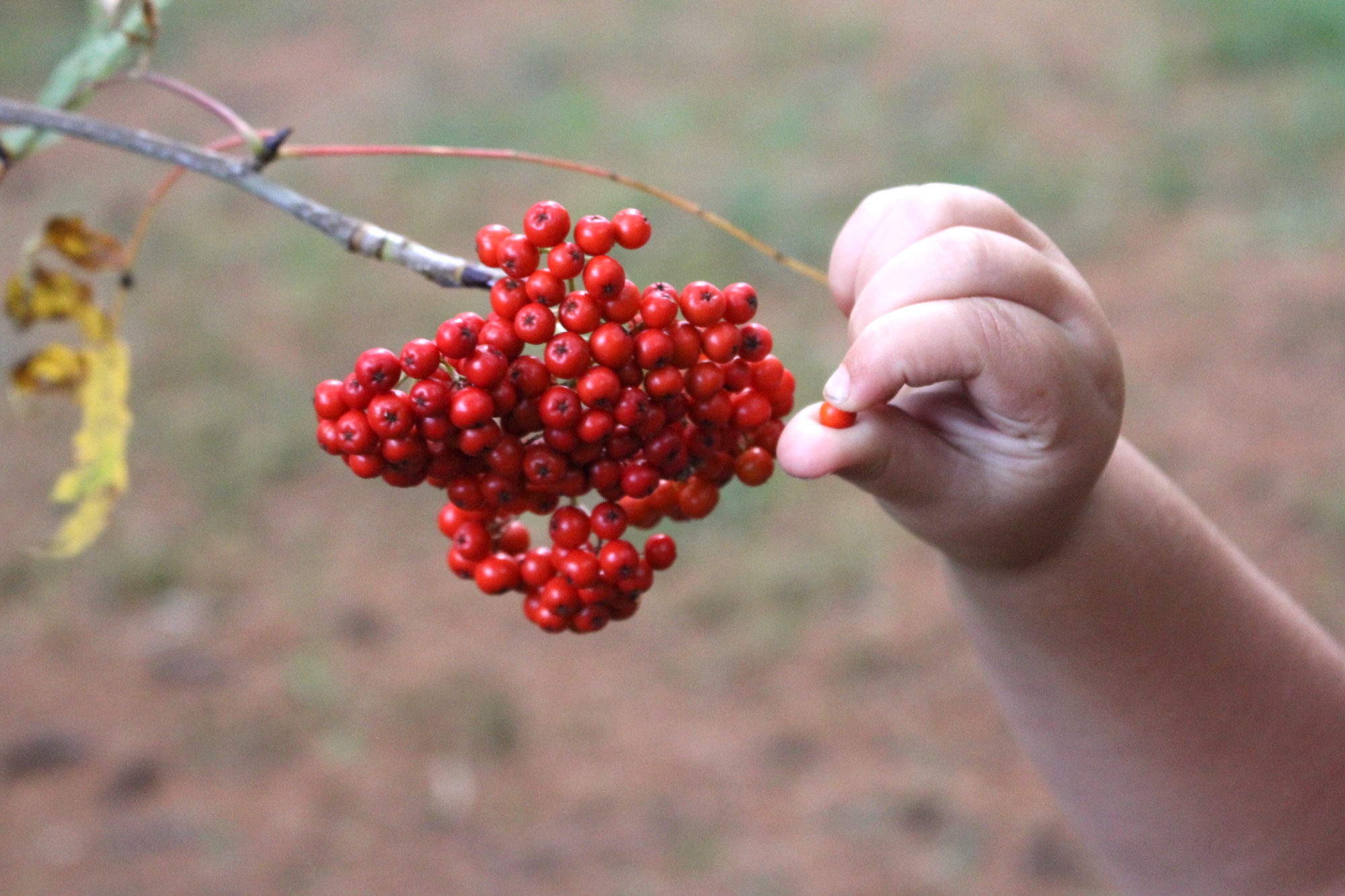
Rowanberry Medicinal Benefits
Rowanberries contain high levels of vitamins A and C and antioxidants. Due to this, herbalists often employ them to boost the immune system and to help prevent cancer and premature aging. In traditional medicine, the berries are also often thought to have diuretic, vasodilatory, anti-inflammatory, and anti-diarrheal properties.
In ancient European traditions, medicinal practitioners often prescribed Rowanberries to treat stomach disorders and bleeding. Different parts of the tree were also employed to treat respiratory inflammation, sore throats, asthma, and congestion.
Many Native American groups also used different parts of the Rowanberry tree for food and medicine. Some groups would make medicinal tea from the leaves, berries, bark, or flowers and drink it or just inhale its steam to treat congestion, colds, flu, headaches, sore chests, sore throats, back pain, infections, and respiratory inflammation or to help ease constipation and improve digestion.
Worldwide, the berries, leaves, bark, and flowers of Rowanberry have also been used to treat liver disease, gallbladder issues, rheumatism, and kidney disease. Additionally, they were sometimes used as a laxative or to improve the appetite. The juice was also used as a gargle for sore throats and hoarseness.
Rowanberries may also be finding their place in modern medicine. Several studies, including this one from 2020, have explored Rowanberry’s composition and found it to be a “promising source of natural compounds with antioxidant and biological activities.”
Another extremely encouraging study completed in 2018 found that Rowanberry’s phenolic compounds help increase the efficiency of tumor chemotherapy by improving the drug’s antimetastatic activity.
Additionally, researchers have explored Rowanberry extract to help treat type 2 diabetes. One particular study completed in 2012 found that Rowanberry extract had the potential to replace or reduce the necessary dose of acarbose, a drug used to improve glycemic control in adults with diabetes.
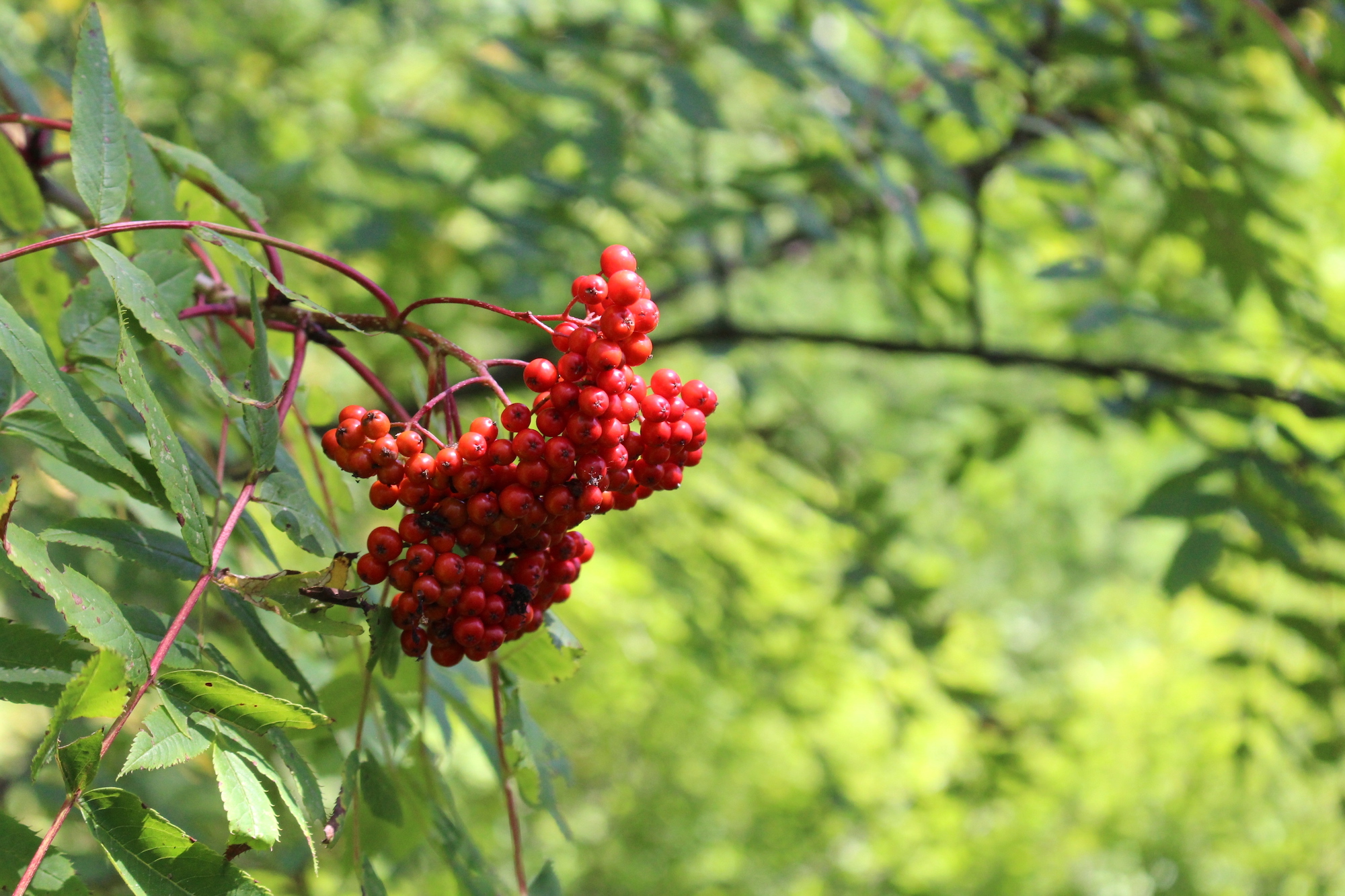
Where to Find Rowanberry
Rowanberry grows in the cooler climates of North America, Europe, Asia, North Africa, New Zealand, and Western Siberia. You may find native species of Rowanberry as well as those that have naturalized widely.
Rowanberry generally prefers areas with cooler climates and is often found in mountainous regions. It thrives in habitats with cool, moist, acidic soil and can grow in full sun, partial shade, or shade.
You may spot Rowanberry growing in rocky hillsides, glens, riversides, roadsides, forest edges, swamps, woodland openings, disturbed areas, and semi-open forests. You may also find Rowanberry cultivars planted in suburban or urban areas along streets and in parks, yards, and gardens.
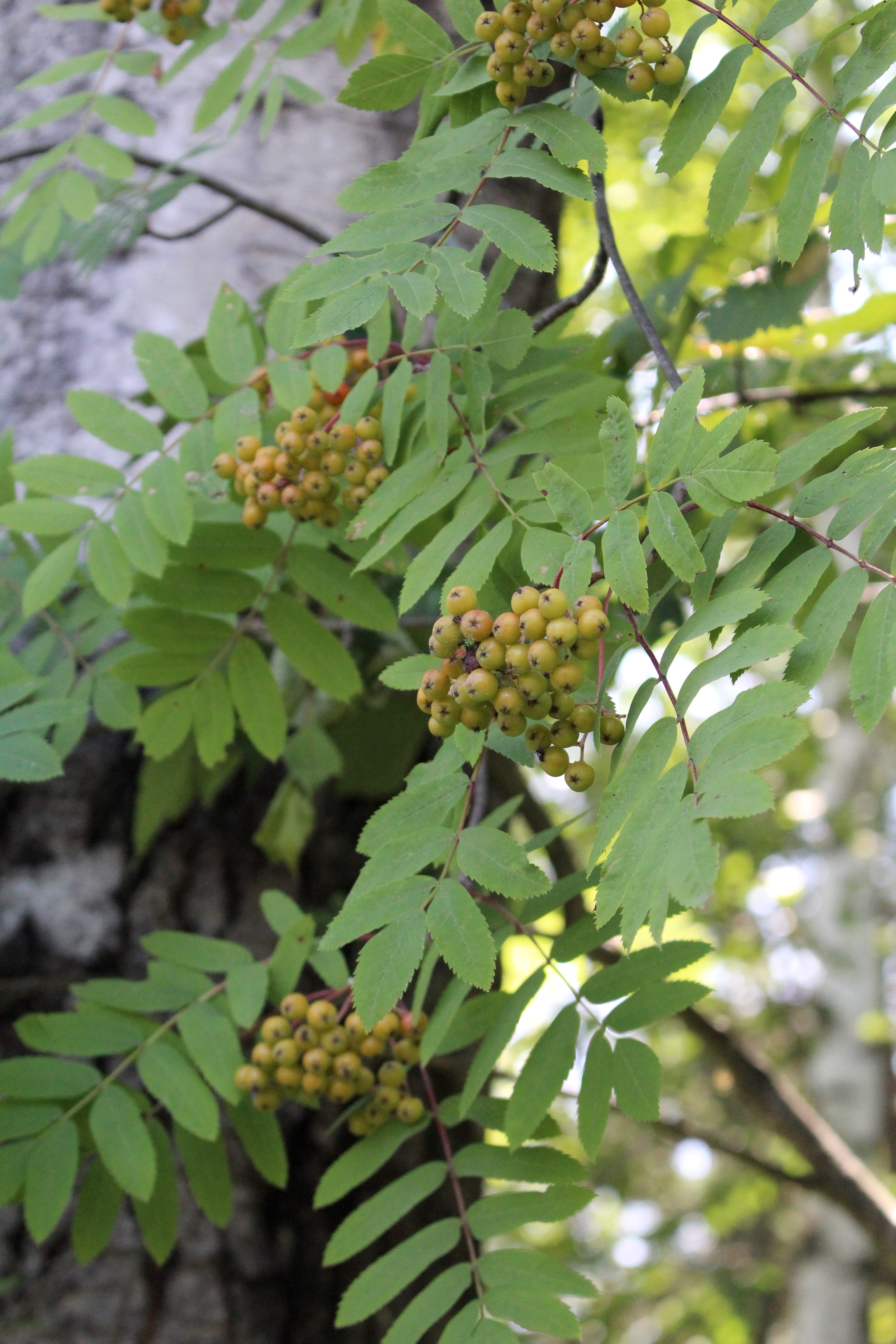
When to Find Rowanberry
You can find Rowanberry year-round, but it’s much trickier to identify when the leaves are off in the winter. The leaves begin growing again in the spring at the same time as many other deciduous species. It then flowers in spring or early summer, blooming between April and June in many areas.
The sap, leaves, twigs, bark, buds, and flowers are all easily harvested in the spring and early summer while the sap is running, and the new twigs, bark, and leaves are young and tender.
While you may spot the berries in late summer or early fall, this isn’t the best time to harvest them. Before harvesting, wait until you’ve had a few frosts, which helps sweeten the berries.
Like other deciduous trees, the leaves of Rowanberry change color and drop in the autumn. As the weather cools in fall, you may spot them in brilliant shades of yellow and red, depending on the species.
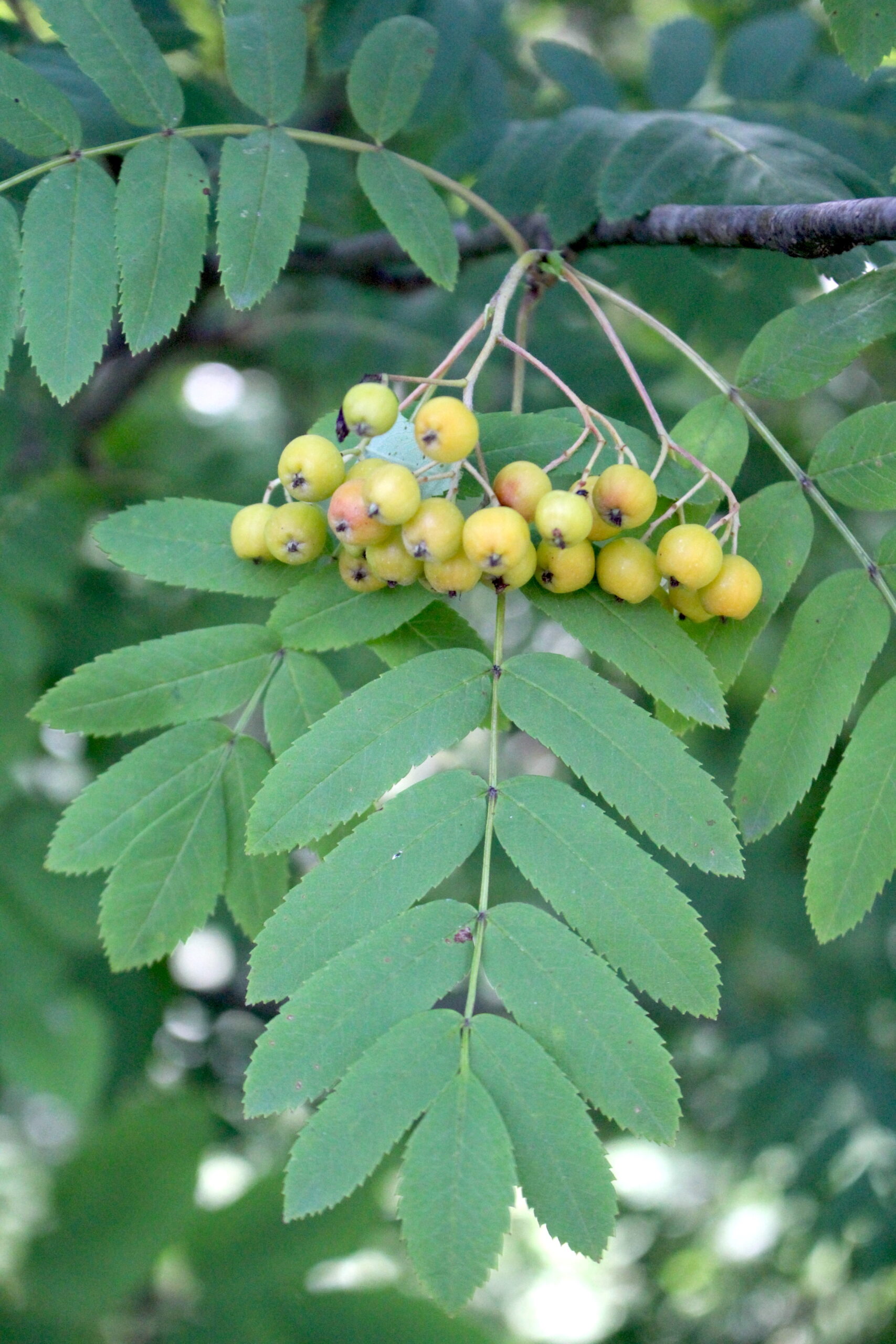
Identifying Rowanberry
Depending on the species, Rowanberry may be a small tree or large shrub, often with a loose or irregularly-shaped crown. They tend to have slender branches, and most species feature green pinnate leaves. Each leaflet has a center vein.
The bark of young Rowanberries is smooth and usually appears light gray or yellowish-gray but usually darkens with age.
You can spot its large flat-topped clusters of little white flowers in spring or early summer that give way to bunches of yellow, orange, or red berries. The sepals remain on the fruit and look like a black, five-pointed star at the bottom of each berry, opposite the stem.

Rowanberry Leaves
Rowanberry leaves vary widely over species.
Rowanberry features green pinnate leaves with 9 to 17 saw-toothed leaflets in most species. The leaves maybe 8 to 10 inches long and about 3 to 4.5 inches wide. Each leaflet is elongated and lanceolate and features a center vein. The leaflets are typically 2 to 3 inches long.
However, a couple of species in other sub-genera feature different leaves. Great examples of this include the Wild Service Tree or Checker Tree (Sorbus torminalis), which is native to North Africa, Western Asia, and Europe and features long, broad, lobed, maple-like leaves, and the False Meddler of Dwarf Whitebeam (Sorbus chamaemespilus) which is a shrubby species native to Europe that features oval-elliptic leaves.
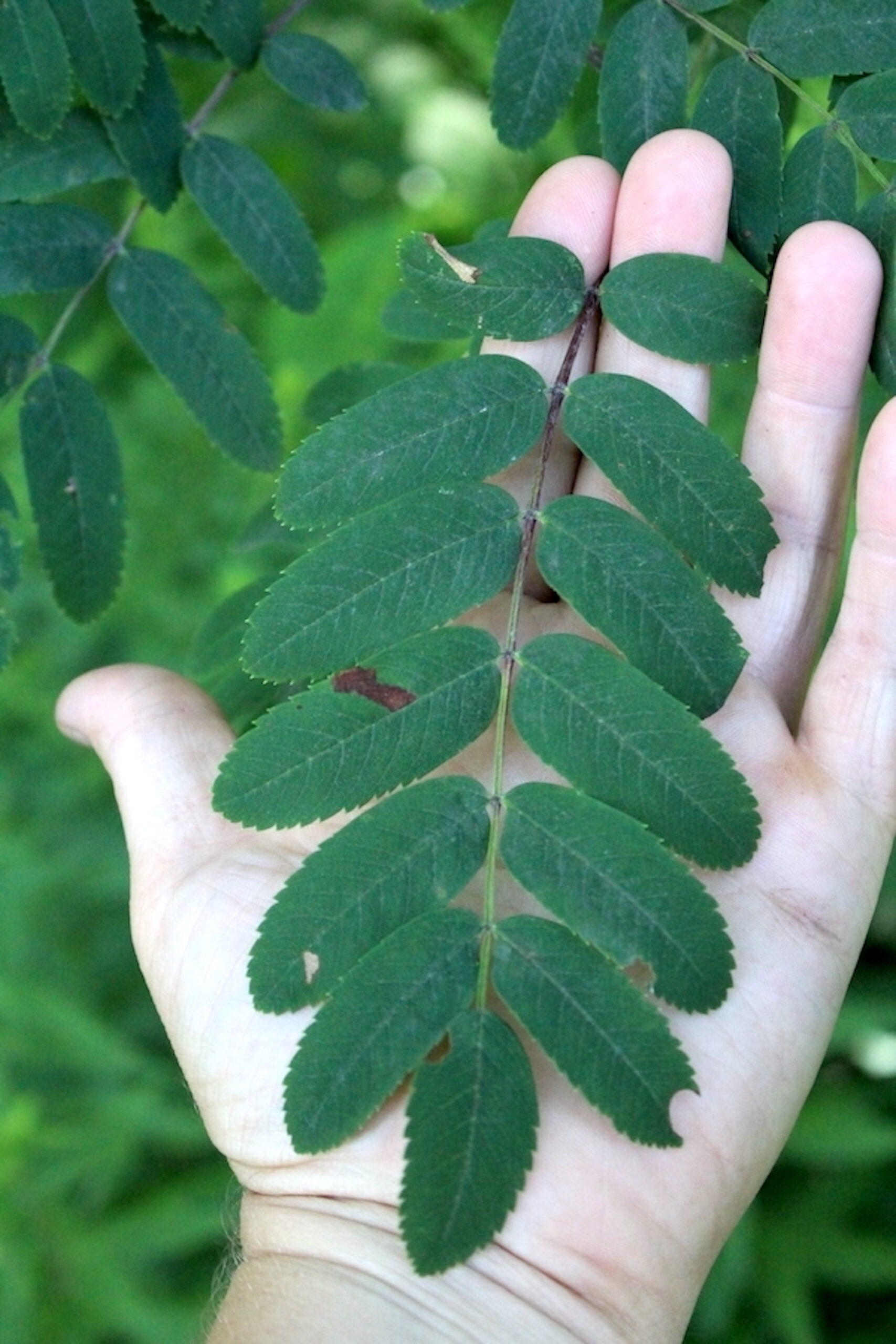
Rowanberry Stems
Like the leaves, the stems and bark of Rowanberry vary somewhat over species. Rowanberries may be small shrubs as small as 3 feet or smaller trees that mature at 40 feet or less. They typically have upright, angled, slender branches and loose, irregularly-shaped crowns.
Rowanberry bark is typically light to dark gray and is smooth or scaly. Most have noticeable, horizontal lines called lenticels, which are pores that allow for gas exchange. The twigs are often reddish brown or brown and are covered with hair when young.
Rowanberry Flowers
Rowanberry produces corymbs or upright, flat-topped clusters of white flowers 3 to 6 inches wide. The individual flowers are about ¼ inch wide and have 5 round petals.
Many find the flowers’ smell unpleasant, and some liken it to urine. This distinctive smell is designed to attract beetles, flies, and other pollinators.
Rowanberry Fruit
Rowanberry fruits are commonly called berries due to their size, but they’re actually pomes and look like miniature apples. The berries are round and about ¼ inch wide.
They may be yellow, orange, or red and form in large clusters in late summer or autumn. They have bitter pulp and seeds. Sepals remain on the berries and look like black, five-pointed stars.

Rowanberry Look-Alikes
Rowanberry is sometimes mistaken for Highbush Cranberry (Viburnum trilobum). However, Highbush Cranberry differs in several noticeable ways:
- Highbush Cranberry is a small shrub that grows up to 13 feet tall.
- Highbush Cranberry has opposite three-lobed leaves.
- Highbush Cranberry flower clusters are comprised of a noticeably different outer ring of sterile flowers with conspicuous petals and an inner ring of small fertile flowers.
- Highbush Cranberry fruits are oblong.
Another lookalike is Red Baneberry (Actea rubra). Fortunately, it too differs in a few easy-to-spot ways:
- Red Baneberry is an herbaceous plant that only reaches up to 31 inches tall.
- Red Baneberry leaves are coarsely toothed with deeply lobed margins.
- Red Baneberry has rounded clusters of white flowers, each with 3 to 5 petal-like tepals.
- Red Baneberry produces ellipsoid-shaped berries.
As its common name Mountain Ash suggests, Rowanberry can also be confused with Ash species (Fraxinus sp.). Thankfully, there are a few good ways to distinguish them:
- Ashes are medium to large trees that may grow 50 to 80 feet tall.
- Ash trees have opposite pinnately compound leaves composed of elliptical or ovate leaflets that are finely saw-toothed or almost without teeth.
- Rather than fruit, Ashes produces dry seeds that are often called “keys” or “helicopter seeds” that are paddle-shaped and mature to brown.
Lastly, Rowanberry can be mistaken for Elderberry (Sambucus sp.). Elderberry is distinguished from Rowanberry in the following ways:
- Elderberry leaves are opposite, pinnately compound, and composed of 5 to 9 leaflets.
- Elderberry typically bears clusters of blue-black berries when mature, though they may occasionally be red.
- The berries are held on reddish stems.
- The young stems of Elderberry are hollow.
Ways to Use Rowanberry
Rowanberry’s use and lore go back centuries. In ancient times, many believed that Rowanberry offered protection from enchantment and witchcraft. This belief was partly due to its red berries as the color red was believed to be a protective color. The berries also feature a five-pointed star, comprised of sepals, on the bottom, which many believed represented a protective pentagram.
Given this, it’s no surprise that Rowanberry saw frequent use in herbal remedies of the past. Many of these past remedies are still in use today.
You can use the berries, which are high in vitamins and antioxidants, to make gargles, syrups, teas, extracts, and steam baths to help treat congestion, colds, flu, sore throats, headaches, and digestive issues. You can use the flowers, leaves, bark, sap, and twigs similarly, though the berries and flowers are generally the preferred part of the plant.
While many foragers focus on Rowanberry as a potent medicinal, you can also use some parts of the plant in various culinary applications.
Rowanberry flowers may not be the most pleasant-smelling flower, but they are edible. You can use them to make jams, jellies, syrups, and cordials.
If the flowers are left to form fruit, you can use the sour, vitamin C rich berries to make jams, jellies, wines, cordials, fruit cheese, peasant bread, or soup.
To use Rowanberries for any internal application, it’s generally best to harvest them after a few frosts when they have sweetened. After harvesting your berries, you should cook them and strain out the seeds.
Rowanberry can also be useful for other homestead projects. Woodworkers prize Rowanberry wood, and Rowanberry twigs can be used to create a black dye.
Rowanberry Recipes
Forager chef has an excellent guide to cooking with rowanberries, which is a great primer for anyone hoping to cook up the fruits of mountain ash trees.
Beyond that, try any of these rowanberry recipes:
- Rowan, Apple & Pumpkin Soup ~ Gather Victoria
- Rowanberry Wine ~ The Guardian
- Rowan Turkish Delight ~ Eat the Weeds
- Rowanberry Apple Jam ~ Forager Chef
- Rowan Berry Juice ~ Our Swedish American Pantry
- Rowan Berry Liqueur ~ Moonshiners Club
- Rowanberry Sorbet ~ Näsets Marcusgård
The most common way to use rowanberries though, seems to be either a rowan berry jelly or a simple homemade rowanberry jam (often mixed with apples)…
Wild Edible Fruits & Berries
Looking for more wild fruit to forage?
- 50+ Edible Wild Fruits and Berries
- Foraging Partridgeberries
- Foraging Nannyberry
- Foraging Chokecherry
- Foraging Wild Black Cherry
